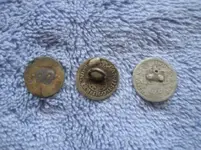SOSDIVING
Jr. Member
- Joined
- Apr 2, 2014
- Messages
- 78
- Reaction score
- 308
- Golden Thread
- 0
- Location
- Wake Forest, NC
- Detector(s) used
- Garrett Sea Hunter PI
White's Surfmaster II VLF
Tesoro Bandido II VLF
Tesoro Cibola VLF
- Primary Interest:
- All Treasure Hunting
This unique granite outcrop landmark feature has hand and foot holes ground into the slanting face of the granite to the top. I have climbed it and appears to have been once used as a Native American "Deer Stand", or should I say "Rock Stand!" Looking down you can scout the area silently, overlooking a stream and Oak trees through the woods. Not only was it utilized by Native Americans, but was also a popular picnic site. Evidence found dates from the late 1700s and into the early 1800s. Shown are some of the unique flat buttons from around the area.
The late 1790’s and into the early 1800’s buttons began being manufactured with quality marks on the back of the button describing quality attributes. The majority of the buttons were imported from Britain and is represented by the quality marks on the rear of the button. Late 1790’s quality marks are raised versus impressed. The examples found include raised quality marks of: “BEST QUALITY LONDON” and “GOLD COLOUR”. Later buttons from the early 1800’s display impressed quality marks of: “BEST GILT”, “TREBLE GILT”, “STANDARD RICH COLOUR”, “EXTRA FINE QUALITY”, “GILT”, and “WARANTEED SUPERIOR FLAT”.
One exceptional and rare find was a silver coin button. This silver button was crafted from a silver Spanish ½ Reale coin, featuring King Charles III, and minted between 1759-1788, it is heavily worn or intentionally buffed down and exhibits a faint crown and shield on the front of the button and a solder mark on the rear of the coin where an wire shank would have been soldered in place. This silver button was reserved for people of above average means and monetary status. During the Revolutionary War period, these coin/buttons were worn by early colonists as defiance against the British Crown and Parliament policies.
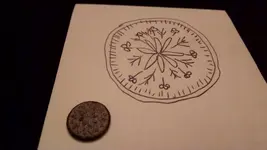
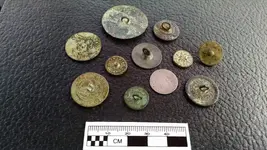






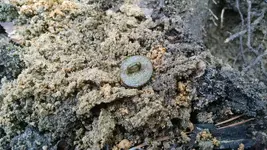

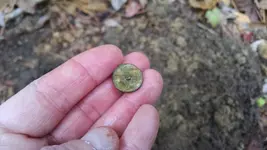
The late 1790’s and into the early 1800’s buttons began being manufactured with quality marks on the back of the button describing quality attributes. The majority of the buttons were imported from Britain and is represented by the quality marks on the rear of the button. Late 1790’s quality marks are raised versus impressed. The examples found include raised quality marks of: “BEST QUALITY LONDON” and “GOLD COLOUR”. Later buttons from the early 1800’s display impressed quality marks of: “BEST GILT”, “TREBLE GILT”, “STANDARD RICH COLOUR”, “EXTRA FINE QUALITY”, “GILT”, and “WARANTEED SUPERIOR FLAT”.
One exceptional and rare find was a silver coin button. This silver button was crafted from a silver Spanish ½ Reale coin, featuring King Charles III, and minted between 1759-1788, it is heavily worn or intentionally buffed down and exhibits a faint crown and shield on the front of the button and a solder mark on the rear of the coin where an wire shank would have been soldered in place. This silver button was reserved for people of above average means and monetary status. During the Revolutionary War period, these coin/buttons were worn by early colonists as defiance against the British Crown and Parliament policies.











Upvote
8

